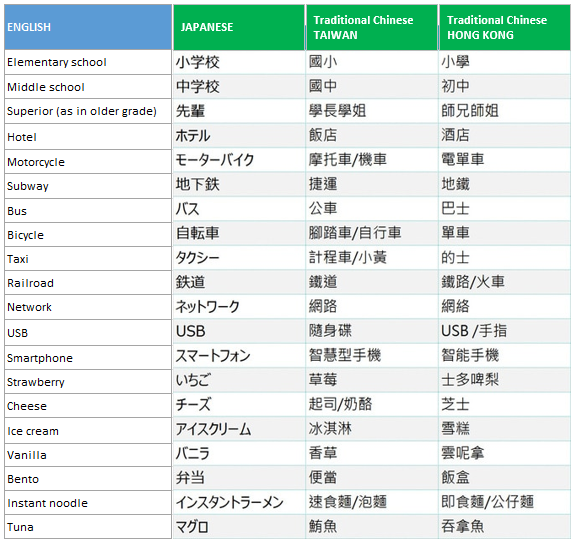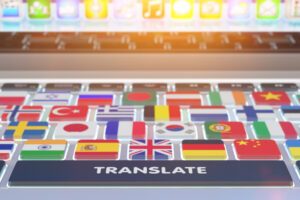Note: This blog post was originally written in Japanese for our Japanese website. We used our machine translation platform Translation Designer to translate it and post-edit the content in English. The original Japanese post can be found here.
Increasing demand of Chinese translation
Japan is a very popular destination for tourists not only from mainland China but also from Taiwan and Hong Kong. In 2016, the number of tourists from these three regions exceeded 12 million.
In line with this boom, local governments in Japan including Tokyo are translating more tourism-related materials such as brochures, signboards, and informational posters into foreign languages. Overall, you have to be detail-oriented for translation work, and especially, translating into Chinese requires extra caution.
Two Chinese languages
The first thing to keep in mind is the difference between simplified Chinese and traditional Chinese.
These are the two main types of Chinese for reading and writing. Simplified Chinese is used in mainland China and Singapore, whereas Traditional Chinese is used in Hong Kong, Macau, and Taiwan.
As the name "traditional" suggests, traditional Chinese was originally used in mainland China as well.
However, traditional Chinese characters are very complicated and difficult to learn. When the People's Republic of China was established in 1949, the government announced the use of simplified characters, i.e., simplified Chinese, in order to improve the literacy rate of the entire nation.
Simplified Chinese and traditional Chinese characters are completely different
There are some characters in common, but the notation method for simplified Chinese and traditional Chinese is very different.
Even if the characters look the same at first glance, the shapes may be slightly different. Not only the characters but also the way terms and expressions are used may be different. That is why it is necessary to translate Chinese appropriately according to the target audience.
Generally, people from mainland China cannot read traditional Chinese. They can guess the meaning to some extent, but the characters feel strange to them.
On the other hand, for people from Taiwan and Hong Kong, it is difficult to understand the meaning of simplified Chinese characters. English would rather be easier to understand for them.
Obviously, it is challenging to substitute with either language or to replace and use simplified and traditional Chinese characters interchangeably.
More local differences
What makes it even more complicated is the difference between dialects.
Even with the same simplified or traditional Chinese characters, the terms and expressions differ greatly depending on the country or region in which they are used. For example, Taiwan and Hong Kong both use traditional Chinese, but sometimes the language varies even when they are referring to the same thing.
One of the reasons is the difference in the spoken language.
Taiwan uses the same common language, Mandarin, as mainland China, while Hong Kong and Macau use Cantonese. Cantonese is one of the many dialects of Chinese. Not only the expressions and how to read the characters but also the grammar and syntax are completely different.
Therefore, even if they write in the same traditional Chinese characters, the terms and expressions are slightly different between Taiwan and Hong Kong.
Differences between traditional Chinese in Taiwan and Hong Kong
Here are some examples of words that are different for traditional Chinese used in Taiwan and in Hong Kong.

Perhaps because it was a British rule in Hong Kong until 1997, it seems that traditional Chinese characters in Hong Kong have more notations based on English pronunciation when compared to Taiwan.
Simplified or traditional, Mandarin or Cantonese...
The first step in working on correct Chinese translation is to use the appropriate characters, expressions, and terms according to the target audience of the translated message.
Next time, we will share about the difference between the characters used in Japanese and Chinese.
Kawamura's translation services
At Kawamura, we have a global network that can support all of your language needs even in multilingual translation projects. We have a wealth of experience in providing high-quality professional translation services.
"Can you work with this file type?"
"Do you support this language?"
With any questions you have, you can rest assured that we have a solution for you. Feel free to reach out to us for a quote or any questions in general.
_CMYK_OL.png)

